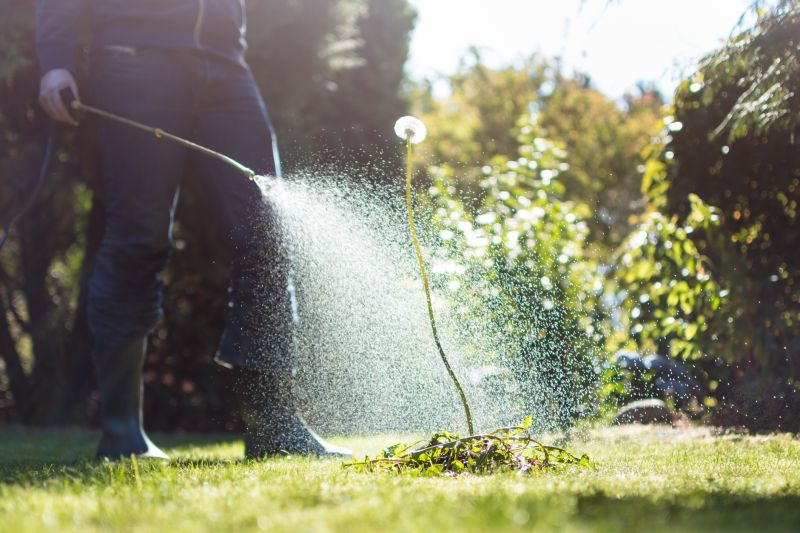Top Vegetation Control Products for Effective Yard Management
Explore the leading tools and solutions designed to help you manage unwanted vegetation efficiently and safely.
 Vegetation control products encompass a wide range of solutions designed to manage unwanted plant growth in various settings, including residential, commercial, and industrial landscapes. These products are essential for maintaining clear pathways, preventing overgrowth in utility corridors, and managing invasive species that can threaten native ecosystems. Depending on the application, vegetation control products can vary from chemical herbicides to mechanical tools, each suited to specific needs and environments.
Vegetation control products encompass a wide range of solutions designed to manage unwanted plant growth in various settings, including residential, commercial, and industrial landscapes. These products are essential for maintaining clear pathways, preventing overgrowth in utility corridors, and managing invasive species that can threaten native ecosystems. Depending on the application, vegetation control products can vary from chemical herbicides to mechanical tools, each suited to specific needs and environments.
Top Overall Option
Multi-Purpose Vegetation Control Solution
A versatile and comprehensive product designed to address various types of unwanted vegetation across different environments. It combines effective chemical formulations with user-friendly application methods, making it suitable for both professional landscapers and homeowners. Its adaptable nature allows for use on grasses, broadleaf weeds, and woody plants, providing a reliable option for diverse vegetation management needs.
Types of Products For Vegetation Controls
Herbicide Sprays
Liquid formulations applied with sprayers to target specific weeds and unwanted plants.
Granular Herbicides
Pre-measured granules spread over soil to control weeds over time.
Selective Herbicides
Products designed to target specific plant types while sparing others.
Non-Selective Herbicides
Broad-spectrum solutions that kill all vegetation they contact.
Brush Cutters
Power tools equipped with blades or trimmers for physical removal of thick vegetation.
Weed Trimmers
Handheld or motorized tools for trimming grass and weeds in tight spaces.
Flame Weeders
Thermal devices that use high heat to destroy weeds without chemicals.
Mowing Equipment
Lawn mowers and brush mowers for regular vegetation management.
Mulching Materials
Organic or inorganic mulches that suppress weed growth by covering soil.
Landscape Fabric
Permeable fabrics placed under mulch to prevent weed emergence.
Root Barriers
Physical barriers installed underground to prevent invasive root spread.
Biological Controls
Natural predators or pathogens used to control specific invasive plants.
Hand Pullers
Manual tools for removing weeds by hand, suitable for small areas.
Vine and Shrub Removal Tools
Specialized equipment for removing woody plants and vines.
Chemical Stumps and Brush Killers
Products applied directly to stumps or thick brush to prevent regrowth.
Popular Choices
Widely used for targeted weed control in lawns and landscapes.
Convenient for large area coverage and long-lasting control.
Popular for maintaining edges and hard-to-reach spots.
Effective for clearing overgrown areas with dense vegetation.
Growing in popularity for chemical-free weed management.
Common for routine vegetation maintenance in lawns and fields.
Effective in preventing weed emergence when used properly.
Trusted for long-term weed suppression under mulch or gravel.
Used in landscaping to control invasive root systems.
Selected for managing invasive species with minimal chemical use.
Ideal for small, targeted weed removal tasks.
Popular for controlling stubborn woody plants and stumps.
Chemical herbicides are among the most commonly used vegetation control methods, offering targeted solutions to suppress or eliminate unwanted plants. They come in various formulations, including liquid concentrates, ready-to-use sprays, and granular options, allowing users to select the most convenient and effective form for their situation. Mechanical tools like weed trimmers, brush cutters, and pruning saws provide physical removal options, especially in areas where chemical use is restricted or undesirable. Additionally, thermal methods such as flame weeders utilize high-temperature heat to eradicate weeds without chemicals, suitable for organic or chemical-sensitive zones.
Proper selection of vegetation control products depends on several factors, including the type of vegetation, area size, safety considerations, and environmental impact. For instance, some herbicides are designed for broadleaf weeds, while others target grasses or woody plants. Safety gear and proper application techniques are critical to prevent accidental exposure or damage to desirable plants nearby. In some cases, combining chemical and mechanical methods can enhance overall effectiveness, particularly in stubborn or invasive plant situations. Regular maintenance and monitoring are essential to ensure that vegetation remains controlled over time and to prevent regrowth or spread of invasive species.
Overall, choosing the right vegetation control products involves understanding the specific needs of your landscape, the types of plants involved, and the safety protocols necessary for effective and responsible management. Whether you prefer chemical solutions, mechanical tools, or a combination of both, there are numerous options available to help maintain a clean and functional outdoor space.
Key Buying Considerations
- Type of vegetation to be controlled (weeds, grasses, woody plants).
- Size of the area requiring treatment to select appropriate products.
- Application method preferences (spray, granular, mechanical).
- Safety considerations for users and nearby plants or animals.
- Ease of use and convenience of application tools.
- Potential environmental impact and chemical residuals.
- Compatibility with existing landscaping or infrastructure.
- Frequency of application needed for effective control.
- Cost and availability of the products.
- Regulatory restrictions or local guidelines.
- Durability and longevity of the control method.
- Ability to target specific plant species without harming desirable plants.
- Storage and shelf life of chemical products.
- Availability of protective gear and safety instructions.
- Potential for regrowth or invasive species spread.
